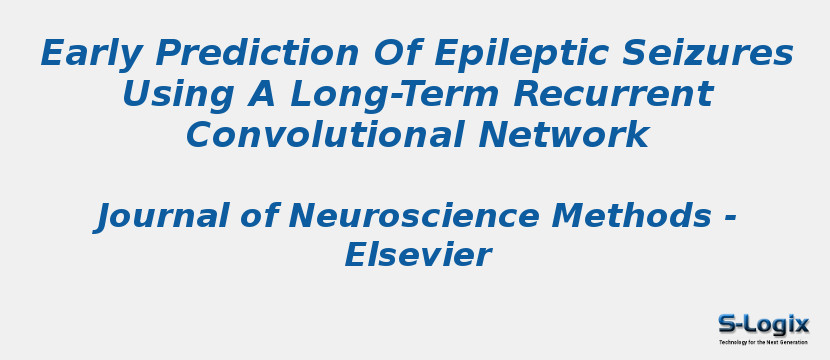Research Area: Machine Learning
A seizure prediction system can detect seizures prior to their occurrence and allow clinicians to provide timely treatment for patients with epilepsy. Research on seizure prediction has progressed from signal processing analyses to machine learning. However, most prediction methods are hand-engineered and have high computational complexity, increasing the difficulty of obtaining real-time predictions. Some forecasting and early warning methods have achieved good results in the short term but have low applicability in practical situations over the long term. First, electroencephalogram (EEG) time series were converted into two-dimensional images for multichannel fusion. A feasible method, a long-term recurrent convolutional network (LRCN), was proposed to create a spatiotemporal deep learning model for predicting epileptic seizures. The convolutional network block was used to automatically extract deep features from the data. The long short-term memory (LSTM) block was incorporated into learning a time sequence for identifying the preictal segments. New network settings and a postprocessing strategy were proposed in the seizure prediction model.The deep seizure prediction model achieved an accuracy of 93.40%, prediction sensitivity of 91.88% and specificity of 86.13% in segment-based evaluations. For the event-based evaluations, 164 seizures were predicted. The proposed method provides high sensitivity and a low false prediction rate (FPR) of 0.04 F P/h.We employed different methods, including the LRCN, deep learning and traditional machine learning methods, and compared them using the same data in this paper. Overall, the LRCN offers approximately 5–9% increased sensitivity and specificity.This study describes the LRCN network for analyzing EEG data to predict epileptic seizures, thereby enabling the implementation of an early warning system that detects epileptic seizures before they occur in clinical applications.
Keywords:
Author(s) Name: Xiaoyan Wei, Lin Zhou, Zhen Zhang, Ziyi Chen, Yi Zhou
Journal name: Journal of Neuroscience Methods
Conferrence name:
Publisher name: Elsevier
DOI: 10.1016/j.jneumeth.2019.108395
Volume Information: Volume 327, 1 November 2019, 108395
